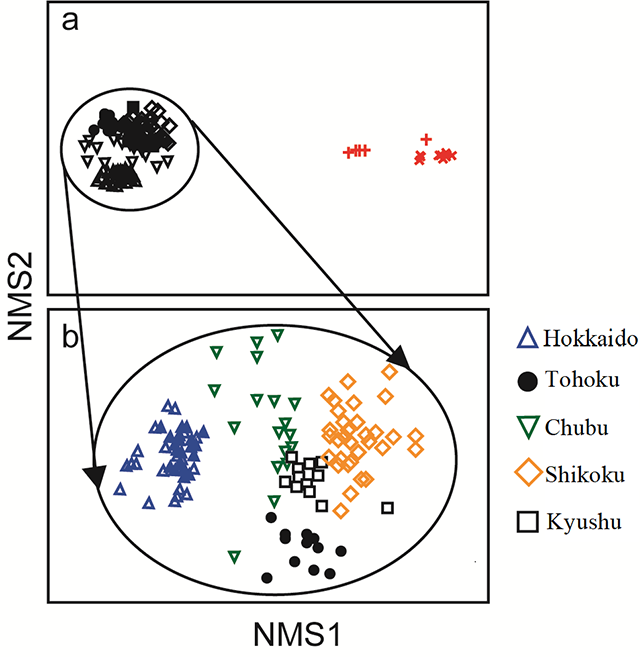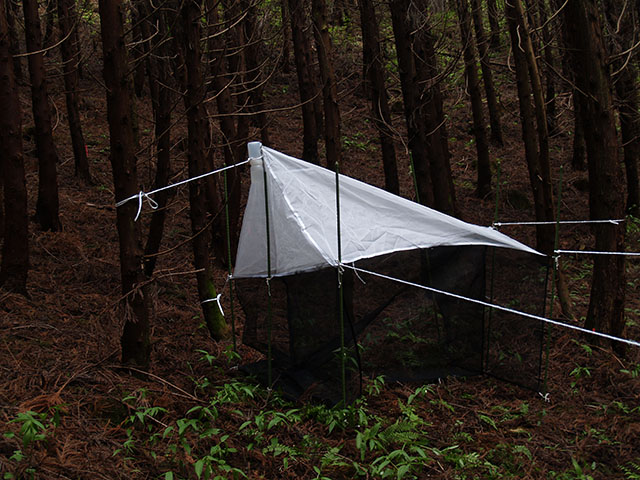Home > Research > Research Results > Research Results 2018 > Cerambycid diversity is influenced to a greater extent by geographical region than by forest type
Update:May 7, 2018
Main content starts here.
Cerambycid diversity is influenced to a greater extent by geographical region than by forest type
| Article title |
Patterns of cerambycid beetle species composition in relation to geographic features, climate and/or silvicultural treatments on different scales |
|---|---|
| Author (affiliation) |
Kimiko Okabe (a)、Motohiro Hasegawa (b)、Hiroshi Makihara (a) (a) Center for Biodiversity, FFPRI, Tsukuba, Ibaraki, Japan. |
| Publication Journal |
Journal of Insect Conservation、21:771-779、December 2017, DOI:10.1007/s10841-017-0020-1( External link ) |
| Content introduction |
In Japan, the enactment of the Act on the Promotion of Regional Cooperation for Biodiversity has led to a deeper recognition of the importance of regional collaborations in practicing conservation efforts directed toward living organisms. These regional collaborations should consider factors, such as the distribution of organisms, for the effective implementation of the Act. Studies on the regional variation in biological communities (species composition) have been conducted for larger organisms, but little attention has been paid to smaller organisms, such as insects. Our study focused upon cerambycids, which are beetles that are highly dependent on forests. We collected cerambycids from different forest types, including planted Japanese cedar (Cryptomeria japonica) and natural forests, at various sites in Japan from Hokkaido to the Nansei Islands. Furthermore, we investigated whether cerambycid species composition differs according to forest type and geographical region. Our results indicated that geographical region greatly influences cerambycid species composition while there was no clear effect of forest type throughout Japan. The cerambycid species composition on the Nansei Islands differed from that within every other survey site. When we excluded the data from the Nansei Islands, the diversity of species composition tended to be positively associated with the distance between the survey sites. In this study, we identified a biological community in the Nansei Islands, which was rather distinct from those in other survey sites, and conservation activities in these islands have proved to be important. Moreover, our findings demonstrate the importance of collaborations among neighboring regions, such as sharing information on biota and ecosystem management, for conservation practices.
Figure 1. Similarity of cerambycid species composition at each survey site (sites are color coded).
Figure 2. Malaise trap set in a plantation forest. |
Copyright © Forest Research and Management Organization. All rights reserved.


